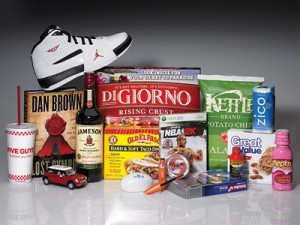what the hottest brands have in common
Recently Ad Age published a list of what it considered to be “America’s Hottest Brands.” 
There seem to be some things the “hottest” brands have in common:
1. They’ve been at it for quite awhile.
The success of many of the brands can be attributed to efforts that were initiated many years ago:
• Jameson, the Irish whiskey brand – they’ve been running a word-of-mouth effort since the 1990’s – and that fueled the success of the larger multi-media campaign they launched this year
• Pabst Blue Ribbon – for over 5 years they’ve been growing steadily by targeting the “retro, nonconformist crowd” with an under-the-radar campaign
• Zipcar – their strategy of using street teams to target very specific neighborhoods was put in place nearly 5 years ago as well
• Kettle Foods, the maker of cravable chips – they’ve been engaging their customers for input on new flavor combinations for more than 5 years and have developed a loyal fanbase of snackers
2. They’re targeted to a specific segment of customers.
These brands don’t try to be all things to all people – they’re very specific about who they’re trying to appeal to and they’ve employed unique insights about that group:
• 5-Hour Energy – they set out to target working adults (vs. the teenage boys who historically have driven most of the energy drink business) who have quite functional needs for the energy boost
• Bolt Bus, a new line of buses from Greyhound – they targeted young, professional travelers who are looking for more affordable alternatives to air travel but who are not willing to sacrifice any of the comforts and conveniences
• Bonobos, the online retailer of “better-fitting” men’s pants – with an average first-visit check of $200, this brand isn’t for everyone – they’re focused on solving the two main issues facing athletically-built men who hate to shop: fit and convenience
• Zico, a coconut water brand – they know yogis and their students are great ambassadors for the natural sports drink, so they target hot yoga studios whenever they enter a new market
3. Their innovations delivered brand differentiation.
Some innovations launched new categories, so by definition, they’re differentiated offerings. And in mature categories, some of the “hottest brands” introduced innovations that clearly differentiate their brands from existing options:
• Virgin America – they set out to “reinvent the entire travel experience” and “get consumers psyched about flying again.” With in-flight Wi-Fi, spacious leather seats, mood lighting, and in-seat food and beverage ordering, Virgin created a truly differentiated customer experience
• Off!, the insect repellent brand – they launched the Off! Clip-On fan, a wearable product that doesn’t require skin application – and in doing so, moved their brand from a functional product to a lifestyle solution
• Tria Beauty, the brand behind the $795 home laser hair-removal product – essentially they’ve created a new category that has huge potential, so they have the enviable distinction of a leadership brand position
• Subaru of America – they’ve put significant mileage between their brand and their declining competitors’ brands by engaging in programs that appeal to their “active, pet-owning, environmentally aware, socially-involved customers”
It will be interesting to see how many of these brands are still hot next year, or the year after that. But I’m pretty sure these distinguishing characteristics will continue to define hot brands for years to come.
(image above from Ad Age by Tony Pettinato)